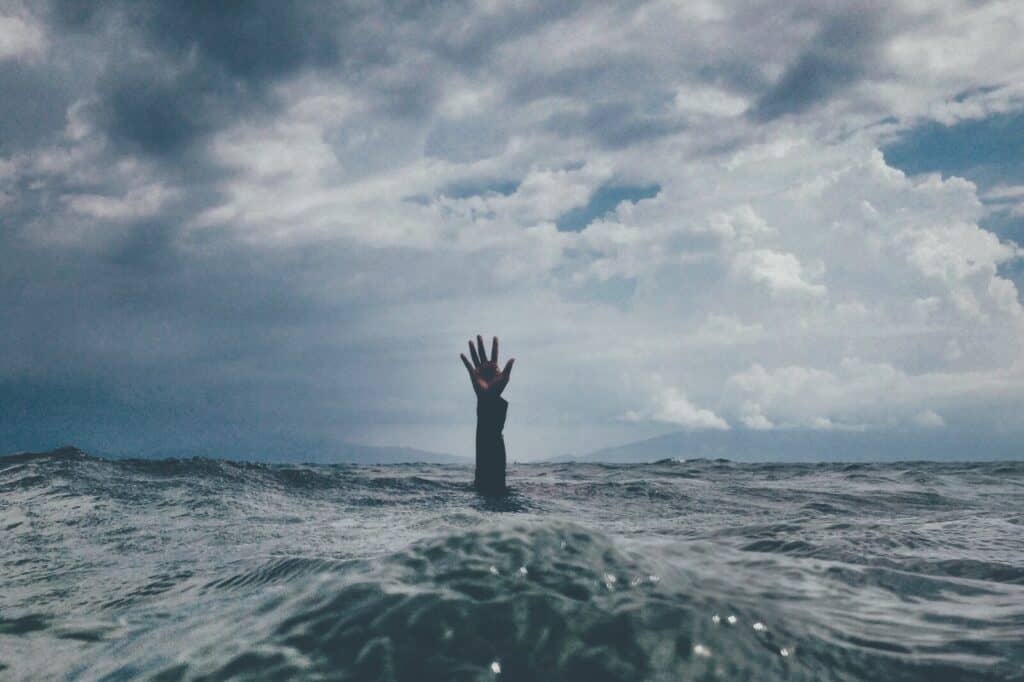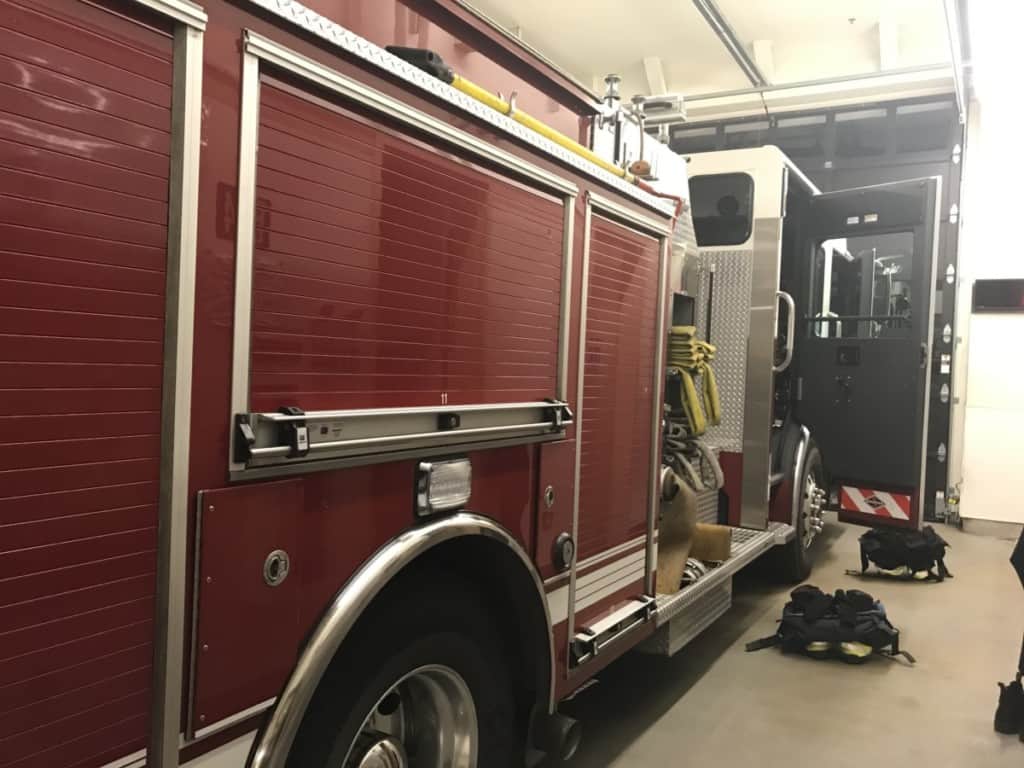It sounds like a simple question with a simple answer. Of course, there’s an international emergency signal for distress, right? There has to be. After all, if there’s one universal thing uniting humanity it’s our ability to get into situations which we need help to get out of.
There is no single international emergency distress signal. Though there are a few commonly used signals, depending on the situation, that are recognized in most areas. S-O-S, Mayday, TTT, Pan-Pan, Securite, and simply declaring “emergency” are well-known signals for distress.
These are all designed for specific scenarios, so let’s take a deeper look at all these, as well as a few others.
Your # 1 priority is keeping your family safe. As a firefighter, I recommend everyone has updated smoke detectors that don’t require battery changes, like these ones from Kidde, a fire extinguisher, like this one from Amerex, and a fire escape ladder if you have bedrooms above the first floor, I recommend this one from Hausse.
Also read: Does 911 Cost Money? The Price of Emergency Calls
12 International Emergency Signals For Distress

1. Morse Code- SOS
There’s no doubt that one of the most popular signals for distress is signaling SOS in Morse Code.
This is done by making three short signals, followed by three long ones and then three more short ones.
This spells out S-O-S in Morse code and it was chosen, not because SOS has some deep meaning to the world at large but because the combination of dots (short signals) and dashes (long signals) is extremely distinctive.
It was originally adopted in Germany in April 1905 and was then picked up the very first International Radiotelegraph Convention in 1906 (which became an international standard in 1908).
It was the official maritime distress signal right up until 1999, but it has since been replaced by the Global Maritime Distress and Safety System. (GMDSS).
One nice thing about SOS is that it can be easily signaled visually as well as over wire. If you have a torch, for example, at night you can use three short pulses of light, followed by three long ones, and then three short ones to call SOS.
There are also plenty of examples throughout history of people scratching the letters SOS into things to ask for help from other people.
2. Morse Code- TTT
There is another safety signal in Morse Code, though which is TTT.
This is still in use in the emergency broadcast system and the signal TTT must be broadcast prior to any broadcast that indicates a natural disaster.
This was, for a time, also used at sea and the sequence is actually of three mid-length pulses which are distinct from the three short pulses of S and the three long ones of T.
It was meant to tell others that there was an issue “involving the safety of navigation and being of an urgent character”.
3. Morse Code- SSS, RRR, QQQ, AAA and SSSS, RRRR, QQQQ and AAAA
When World War 2 arrived, it was decided that given the kinds of catastrophe that can strike at sea during times of war that the system would need extending.
The signal SSS was introduced to signify that a vessel was under attack from a submarine, RRR was to show that a ship was being attacked by a surface raider and AAA meant that they were under attack by aircraft.
The QQQ meant that the ship was under attack, but the crew didn’t have the foggiest clue as to who or what was doing the attack.
These codes were added as a suffix to the SOS broadcast.
So, a ship attacked by a submarine would broadcast SOS-SSS over and over again, for example.
To make matters even more complicated, at some point during the war it was decided to replace all of these three-letter suffixes for SOS with four-letter ones, so SSS became SSSS and AAA became AAAA, and so on.
It’s worth noting that while pretty much everyone will recognize SOS if broadcast today and some might even recognize TTT, nobody is likely to recognize the suffices and it’s best not to use them if you do decide to use Morse Code to signal distress.
4. The Global Maritime Distress and Safety System
This may have replaced Morse Code but sadly, it doesn’t actually replace it with a code that you can use to signal distress.
The GMDSS is designed to ensure that distress calls can be broadcast on an automated basis without the interference of a radio operator.
This is very useful because it means that in an emergency, all the crew can tackle the emergency and the GMDSS handles the call.
GMDSS operators need a level of training that a radio operator does not, though, and it’s important to have passed the GMDSS license before opting to use this system for safety and signaling distress.
Also read: Best Place To Store A Fire Extinguisher On A Boat
5. Mayday
Mayday is an emergency procedure and distress signal which is used in voice communications. You may also find that the French word “SECURITE” is also used and, in fact, in certain types of broadcast SECURITE is a mandatory signal.
To be used effectively you must say Mayday three times “mayday mayday mayday” this is to help the receiver understand the phrase clearly and to ensure that they know it’s an actual Mayday call rather than a call about a Mayday call.
The word was coined by Frederic Stanley Mockford at Croydon Airport, England and he’d been asked to come up with a word that could easily be communicated by pilots to register distress.
It is, of course, a corruption of the French phrase M’aidez (help me).
They had considered using SOS but apparently, the sound of S was poor over the telephone lines of the day and Mayday won out.
It is a criminal offense to send a Mayday call if you are not genuinely in need of help in most nations.
6. Pan-Pan
The French, however, often used Pan-pan (it comes from the word panne which means “to breakdown”) and this is still sometimes used to indicate distress.
It is meant to signify an urgent situation that is not a “grave and imminent threat”.
Sometimes, the suffix “medico” was attached to “pan-pan” to indicate a medical emergency but this suffix has been withdrawn and is unlikely to be recognized today.
7. Declaring Emergency
A more recent addition to the emergency distress lexicon is “declaring emergency”, which can be used instead of Mayday or Pan-pan.
Its proponents say that Mayday and Pan-pan have caused confusion for recipients in the past and that declaring an emergency is clearer and more distinct.
8. Three Signals
Another commonly accepted sign of emergency or distress is to make three of the same signal over and over again.
That is three flashes of light, three evenly spaced-out fires, three whistles, three shots, three flares, etc.
9. X-Marks The Spot
You can also use a large visual X to indicate distress to those flying over the area, and when we say “large” we mean “as large as you can make it”.
It’s not easy to spot details on the ground from hundreds or thousands of feet up in the air. So, get as many logs, branches, rocks, as you can and make a huge X.
You can also make an X with your own body. Lay on your back and repeatedly raise and lower your arms with them fully outstretched on either side of you.
10. Signal Fire
A signal fire is only going to be of interest to a pilot if it is lit AFTER the engine of the aircraft becomes audible to the person on the ground.
You want to create as much smoke as possible using a signal fire and it can help to add green wood which gives off a lot of smoke.
11. Orange And Red Flares
You use an orange flare during daylight and a red one at night.
You only use a flare if you are sure there are either maritime vessels or aircraft nearby, after all, if no one can see your flare, it’s useless.
You may also, on some vessels, have the option of a red parachute flair which better marks your position on the water, this should be used during the day, not at night. After you have been spotted by another vessel.
12. International Code Flags
Assuming you’re on a ship and you have a set of international code flags to hand, then the signal for distress using these flags is to display N over C.
Sources: 1 2 3 4 5 6 7 8 9 10 11
Related Articles
How to Put Out a Fire on Someone’s Clothes: A Guide
Does Stop, Drop, And Roll Really Work? [Clothes On Fire]
What Type Of Fire Can Be Put Out Safely With Water?

